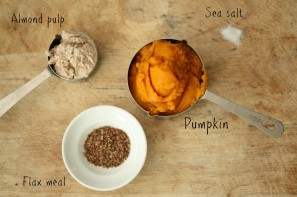 There has been an upsurge in an “anti-western diet” philosophy recently, with a movement towards higher fat, higher protein, lower carbohydrate intake where the kinds of food matter as much or moreso than the macronutrient aspect of the diet. Kris Gunnars wrote a great piece on this recently titled What’s Wrong with the Modern Diet. This increased interest in the use of nutrition and nutrient timing as a method for improving general health and wellness is a good thing.
There has been an upsurge in an “anti-western diet” philosophy recently, with a movement towards higher fat, higher protein, lower carbohydrate intake where the kinds of food matter as much or moreso than the macronutrient aspect of the diet. Kris Gunnars wrote a great piece on this recently titled What’s Wrong with the Modern Diet. This increased interest in the use of nutrition and nutrient timing as a method for improving general health and wellness is a good thing.
But where does this fit in with regards to athletes? There’s a large debate about the efficacy of a lower carbohydrate-no grain diet and its relationship to actual athletic performance.
But wait, I’ve heard low carbohydrate-high fat diets are awesome for performance.
Sort of. Yes, low carbohydrate diets do increase fatty acid oxidation during exercise and encourage intramuscular fat storage. The body is smart. If there isn’t enough primary fuel to support the stress it’s under, it’ll go for a secondary source -in this case, fat- then store more of it for the next time it encounters that stress. But this does not translate into improved performance as the ability to maintain high-intensity and/or prolonged exercise is compromised(1). Differences aside, the body needs carbohydrate to exist. And it needs accessible carbohydrate to perform in our cycling/endurance world.
WHAT ARE CARBS GOOD FOR, ANYWAY?
First, some basic physiology. The roles of carbohydrates in the body include providing energy for working muscles, providing fuel for the central nervous system, enabling and perpetuating fat metabolism, and preventing the use of protein as a primary energy source. Remember, carbohydrate, specifically glucose, is the preferred source of energy for muscle contraction and biologic work. Second, glycogen (the storage form of glucose in the muscles and liver) is limited in its storage (about 350g of muscle glycogen and 40-50g liver glycogen in a non-obese 70kg man). The glycogen stored in the muscle is used directly by that muscle during exercise, it cannot “borrow” glycogen from other resting muscles. Hence, glycogen stores become critical to replenish for the endurance athlete. Third, the minimum intake of carbohydrate necessary for survival is 130 grams per day to support the central nervous system, red blood cell production, the immune system, and tissues dependent on glucose. Read as: 130g DOES NOT SUPPORT PHYSICAL ACTIVITY.
When examining the effects of aerobic exercise on muscle glycogen utilization, intensity and duration of the exercise directly affect the amount of glycogen used. It’s common knowledge that low intensity (e.g. 20-30% VO2 max) uses minimal glycogen. But when the intensity approaches ~75% of VO2 max, muscle glycogen is almost completely depleted after 2 hours of cycling. Interesting to note on intensity, the rate of glycogenolysis is higher in type IIa and IIb fibers at intensities greater than 75% VO2max (usually type I fibers deplete first), thus in a race situation when it’s “GO” from the gun, the actual rate of total muscle glycogen depletion will be faster, increasing the probability of early fatigue. It appears that glycogen availability is the primary limiting factor on sustaining intensity during prolonged exercise, with the initial amount of glycogen stored in the muscle directly proportional to the athlete’s ability to sustain work rates greater than 70% VO2max over time. With dietary carbohydrate a significant contributor to muscle glycogen stores, thus performance, how does an athlete maximize their stores on a lower carbohydrate-no grain diet? The best answer to this is to use your body’s natural windows of glycogen replenishment and specific types of carbohydrates to maximize glycogen stores.
KEEP THE CARB WINDOW OPEN, SOMETIMES
The window of glycogen replenishment: Muscle glycogen synthesis is more rapid if carbohydrates are consumed directly after exercise as opposed to waiting several hours. Several pro athletes I’ve worked would take the idea that if they delayed food post-exercise, then they would maintain fat burning and lose weight more effectively. In fact this did the opposite. It put them in a catabolic state that perpetuated weight gain and inadequate recovery. The difference between eating within 30-60 minutes post exercise or 2-2.5 hours later is a 50% reduction in glycogen synthesis. As those minutes tick away, insulin sensitivity declines, resulting in a slower rate of muscle glucose uptake and overall glycogen storage. Eating right after exercise delays this decline in insulin sensitivity, thus you can extend the ability to rapidly story glycogen by up to 8 hours with a hit of carbohydrate every couple of hours.
Okay, but I heard you need to mix protein and carbohydrate post exercise; why is this?
There are three key reasons for this. First, protein intake within 30 minutes of exercise shifts the body from the catabolic state of exercise into the anabolic (muscle repair and synthesis) state. Carbohydrate helps this by increasing muscle insulin sensitivity. Second, the ingestion of carbohydrate/protein post exercise can reduce inflammation and positively impact the immune system. The third, and most interesting component is that carbohydrate and protein work synergistically to increase glycogen storage rates. When comparing glycogen storage rates in the first 40 minutes following exhaustive cycling (3 hours >75%Vo2max) , glycogen storage was four times faster after a carbohydrate-protein supplementation (2:1 CHO:PRO; 80g CHO, 40g PRO, 6g Fat) than an iso-carbohydrate supplement (80g CHO, 6g Fat), and twice as fast as an iso-caloric treatment (120g CHO, 6g Fat). The take home here is that if you are eating a lower-carbohydrate diet; maximize your glycogen resynthesis by eating protein with carbohydrate within the first 30-40 minutes post exercise. Then top-up with another hit of protein+carbohydrate 2 hours later.
BUT WHAT ABOUT GRAINS?
Many individuals believe that the best sources of post-exercise carbohydrate are grain based (e.g. oatmeal, pasta, bread, cereals) but this isn’t exactly true. The best sources of carbohydrates are those that have a greater composition of glucose and/or are high on the glycemic index. For example, starchy veggies like sweet potato / yams, winter squash like butternut, root veggies like parsnips, etc are good options as they are moderate-high on the GI and carbohydrate content. Cassava (raw) has 78g CHO/cup; mashed plantains have 62g/cup and mashed sweet potato have 58g/cup. Compare this to cooked oatmeal at 27g/cup, quinoa at 39g/cup and the ever popular cooked pasta at 43g/cup.
What about fruit, since they can be high on the glycemic index?
The critical difference between starchy veggies and fruit is the type of carbohydrate that comprises each. The veggies are comprised of longer chains of glucose, whereas fruit is primarily fructose. Glucose is more efficient at muscle glycogen resynthesis, as fructose is preferentially used by the liver.
What’s the take home? The metabolic window of opportunity is the time after exercise in which the muscle is highly capable of responding to the anabolic effects of insulin with the ingestion of carbohydrate and protein. Without any nutrient intake, this window begins to close 45 minutes post exercise. By taking advantage of this post-exercise window and extending insulin sensitivity with the ingestion of specific carbohydrates with protein, individuals who adhere to a lower carbohydrate-no grain diet can maximize glycogen storage.
Now, whether or not grains are bad in general? That’s a topic for another time.
(1) Recommended reading: Burke LM. Fueling Strategies to optimize performance: training high or training low? Scand J Med Sci Sports, 2010
 Stacy Sims, MSc, PhD, served as an exercise physiologist and nutrition scientist at Stanford University specializing in recovery and nutritional adaptations for health, body composition, and maximizing performance. During the past decade she has worked as an environmental physiologist and nutrition specialist for top professional cyclists and triathletes, ultra-endurance athletes, the Garmin/Slipstream Pro Cycling Team, USA Cycling Olympic Team (BMX and women’s track cycling), Team Tibco, Flying Lizard Motorsports, and Team Leopard-Trek, among others. She competes as a Cat 1 road cyclist and elite XTerra triathlete and is co-founder of OSMO Nutrition.
Stacy Sims, MSc, PhD, served as an exercise physiologist and nutrition scientist at Stanford University specializing in recovery and nutritional adaptations for health, body composition, and maximizing performance. During the past decade she has worked as an environmental physiologist and nutrition specialist for top professional cyclists and triathletes, ultra-endurance athletes, the Garmin/Slipstream Pro Cycling Team, USA Cycling Olympic Team (BMX and women’s track cycling), Team Tibco, Flying Lizard Motorsports, and Team Leopard-Trek, among others. She competes as a Cat 1 road cyclist and elite XTerra triathlete and is co-founder of OSMO Nutrition.